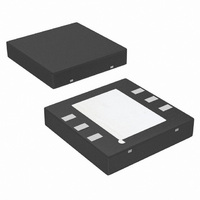LM1086ILD-3.3/NOPB National Semiconductor, LM1086ILD-3.3/NOPB Datasheet - Page 10

LM1086ILD-3.3/NOPB
Manufacturer Part Number
LM1086ILD-3.3/NOPB
Description
IC REG LDO POS 1.5A 3.3V 8-LLP
Manufacturer
National Semiconductor
Datasheet
1.LM1086IS-ADJNOPB.pdf
(15 pages)
Specifications of LM1086ILD-3.3/NOPB
Regulator Topology
Positive Fixed
Voltage - Output
3.3V
Voltage - Dropout (typical)
1.3V @ 1.5A
Number Of Regulators
1
Current - Output
1.5A
Current - Limit (min)
1.5A
Operating Temperature
-40°C ~ 125°C
Mounting Type
Surface Mount
Package / Case
8-LLP
Lead Free Status / RoHS Status
Lead free / RoHS Compliant
Voltage - Input
-
Other names
LM1086ILD-3.3
www.national.com
Application Note
OVERLOAD RECOVERY
Overload recovery refers to regulator’s ability to recover from
a short circuited output. A key factor in the recovery process
is the current limiting used to protect the output from drawing
too much power. The current limiting circuit reduces the
output current as the input to output differential increases.
Refer to short circuit curve in the curve section.
During normal start-up, the input to output differential is
small since the output follows the input. But, if the output is
shorted, then the recovery involves a large input to output
differential. Sometimes during this condition the current lim-
iting circuit is slow in recovering. If the limited current is too
low to develop a voltage at the output, the voltage will
stabilize at a lower level. Under these conditions it may be
necessary to recycle the power of the regulator in order to
get the smaller differential voltage and thus adequate start
up conditions. Refer to curve section for the short circuit
current vs. input differential voltage.
THERMAL CONSIDERATIONS
ICs heats up when in operation, and power consumption is
one factor in how hot it gets. The other factor is how well the
heat is dissipated. Heat dissipation is predictable by knowing
the thermal resistance between the IC and ambient (θ
Thermal resistance has units of temperature per power (C/
W). The higher the thermal resistance, the hotter the IC.
The LM1086 specifies the thermal resistance for each pack-
age as junction to case (θ
resistance to ambient (θ
must be added, one for case to heat-sink (θ
heatsink to ambient (θ
predicted as follows:
T
T
P
consumption is calculated as follows:
Figure 6 shows the voltages and currents which are present
in the circuit.
J
J
D
= T
is junction temperature, T
is the power consumption of the device. Device power
I
P
IN
D
A
FIGURE 5. Regulator with Protection Diode
= I
= (V
+ P
L
D
+ I
IN
(θ
−V
G
JC
OUT
+ θ
) I
CH
HA
L
+ V
). The junction temperature can be
+ θ
JA
), two other thermal resistance
IN
HA
JC
A
I
G
(Continued)
) = T
). In order to get the total
is ambient temperature, and
A
+ P
D
θ
CH
JA
) and one for
10094815
JA
).
10
Once the device power is determined, the maximum allow-
able (θ
θ
The LM1086 has different temperature specifications for two
different sections of the IC: the control section and the output
section. The Electrical Characteristics table shows the junc-
tion to case thermal resistances for each of these sections,
while the maximum junction temperatures (T
section is listed in the Absolute Maximum section of the
datasheet. T
T
θ
follows:
θ
θ
The required heat sink is determined by calculating its re-
quired thermal resistance (θ
θ
θ
θ
TROL SECTION) + θ
θ
SECTION) + θ
If thermal compound is used, θ
C/W. If the case is soldered to the heat sink, then a θ
be estimated as 0 C/W.
After, θ
lower of the two θ
ate heat sink.
If PC board copper is going to be used as a heat sink, then
Figure 7 can be used to determine the appropriate area
(size) of copper foil required.
JA (max)
JA (max)
JA
JA
HA(max)
HA (max)
HA (max)
HA (max)
J(max)
FIGURE 7. Heat sink thermal Resistance vs. Area
(max, CONTROL SECTION) = (125˚C for T
(max, OUTPUT SECTION) = (150˚C for T
JA(max)
HA (max)
is 150˚C for the output section.
should be calculated separately for each section as
= θ
= T
= θ
FIGURE 6. Power Dissipation Diagram
should be calculated twice as follows:
= θ
JA(max)
R(max)
JA
J(max)
) is calculated as:
JA
CH
(max, OUTPUT SECTION) - (θ
(max, CONTROL SECTION) - (θ
is calculated for each section, choose the
)
HA (max)
/P
− (θ
is 125˚C for the control section, while
D
CH
= T
JC
)
J(max)
+ θ
values to determine the appropri-
HA(max)
CH
− T
CH
)
).
A(max)
can be estimated at 0.2
)/P
10094864
D
J(max)
A(max)
JC
A(max)
10094816
(OUTPUT
JC
) for each
)/P
CH
(CON-
)/P
D
can
D










